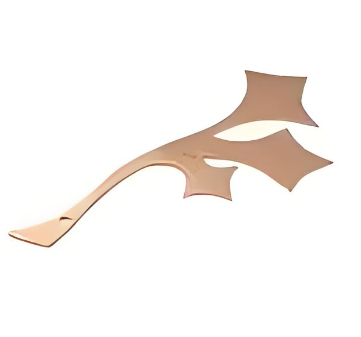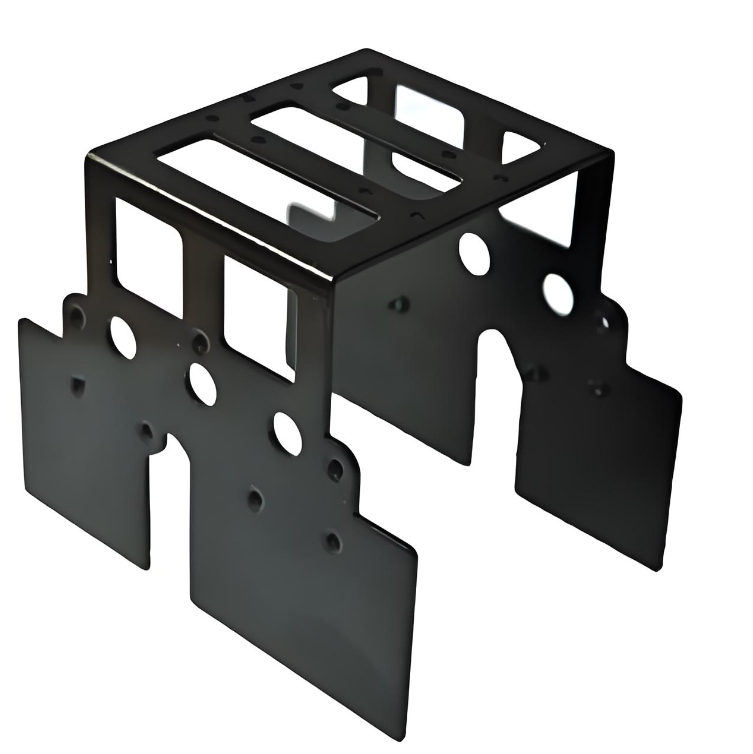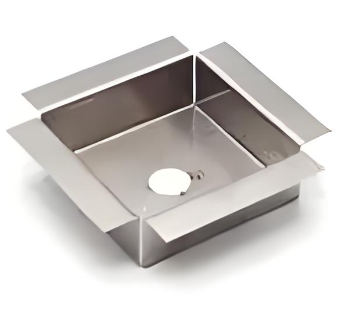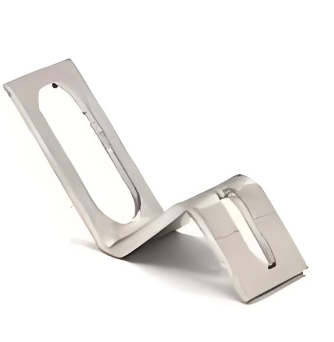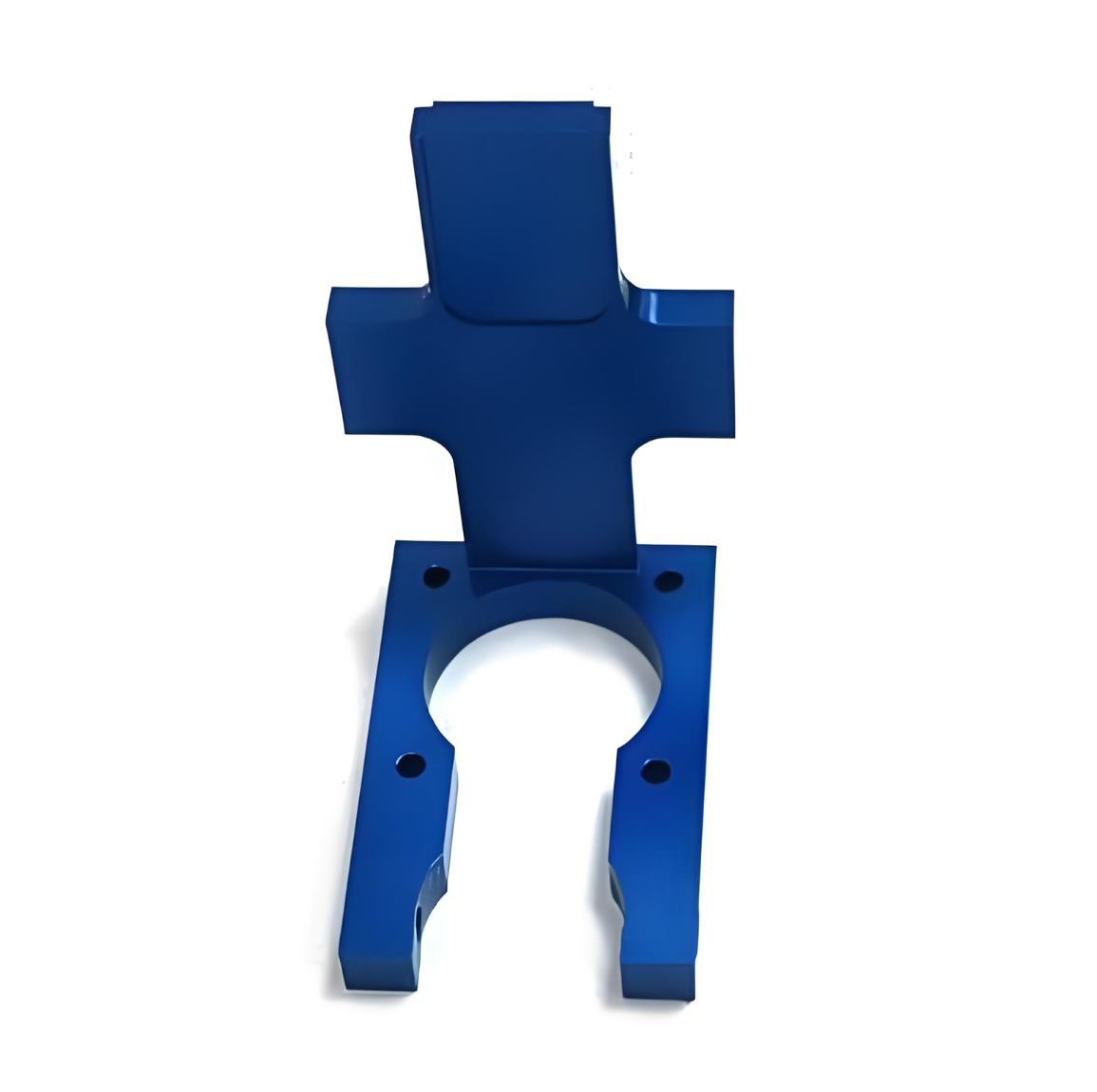Stamping
Release time:2024-10-25 18:09:21 Number of views:464 Publisher:njjh Source:编辑部
Normal Stamping
A.What is the stamping process?
Stamping is a forming and processing method that applies external force to sheets, strips, pipes, and profiles by means of presses and dies to cause plastic deformation or separation to obtain workpieces (stampings) of desired shape and size. Stamping and forging are both plastic processing (or pressure processing), collectively called forging. The stamped blanks are mainly hot-rolled and cold-rolled steel sheets and strips.
The cold stamping die process is a metal processing method, which is mainly aimed at metal materials, and the materials are forced to deform or separate through pressure equipment such as punches to obtain product parts that meet actual requirements, referred to as stamping parts.
There are many situations in the stamping process of the mold, the most common stamping process. as follows:
1. Blanking;
A general term for a stamping process that separates materials. It includes blanking, punching, punching, grooving, sectioning, chisel cutting, edge trimming, tongue cutting, cutting, etc.
2. Making shape;
It is mainly a stamping process that cuts off a circle of excess material around the material to meet the size requirements.
3. Cutting tongue;
A certain part of the material is cut into a hole, but not all of it is cut. It is common that only three sides of the rectangle are cut and one side is left untouched. The main function is to set the step distance.
4. Flaring;
This process is uncommon, mostly for tubular parts that need to expand the end or somewhere outward into a trumpet shape
5. Necking;
Just the opposite of flaring, it is a stamping process in which a tubular part needs to be narrowed inward at the end or somewhere.
6. Punching;
In order to obtain the hollow part of the part, the corresponding hole size is obtained by separating the material through the punch and the knife-edge in the middle of the complete material.
7. Precision stamping;
When the stamping part requires a full bright band, it can be called "precision stamping".
8. Full Bright Blanking;
Unlike precision stamping, full-bright punching must obtain a full-bright band in one-step punching, while precision stamping is not.
9. Deep hole punching;
When the hole diameter in the product is smaller than the material thickness, it can be understood as deep hole punching, and the punching difficulty is that the punch is easy to break.
10. Making convex hull;
A protrusion is punched on the flat material to perform the corresponding process of use.
11. Forming shape;
Many friends understand forming as bending, which is not rigorous. Because bending is a type of forming, forming refers to the general term for all fluid material processes.
12. Bending;
A conventional process in which the corresponding angle and shape are obtained by plastically deforming the flat material through the convex and concave die inserts.
13. Beading;
This is generally used in sharp-angle bending forming inserts, mainly by punching convex pits in the material at the bending position to reduce material rebound and ensure a stable angle.
14. Coining;
A process in which a special pattern is pressed on the surface of the material through a punch. Commonly include embossing, pitting, etc.
15. Rounding;
One of the molding processes is a process in which the shape of the product is curled into a circle.
16. Hole flanging;
The process of inverting the inner hole of the stamping part to obtain a side edge of a certain height.
17. Leveling
It is mainly aimed at the situation where the product flatness is required to be high. When the flatness of the stamping part is out of tolerance due to stress, the leveling process needs to be used for leveling.
18. Shaping;
After the product is formed, if the angle and shape are not the theoretical sizes, it is necessary to consider adding a process for fine-tuning to ensure the stability of the angle. This process is called "shaping".
19. Deep drawing;
It usually refers to the process of obtaining hollow parts from flat materials by a method, which is called the stretching process, which is mainly completed by convex and concave molds.
20. Continuous deep-drawing;
Usually refers to a stretching process formed by stretching the material in the same position multiple times through one or several dies in a material belt.
21. Thinning and deep drawing;
Continuous drawing and deep drawing belong to the thinning drawing series, which means that the wall thickness of the drawn part will be less than the thickness of the material itself.
22. Mandrelling;
The principle is similar to that of the convex hull, which is to make the material convex. However, drawing usually refers to automobile parts, which belong to a relatively complex-forming series, and its drawing structure is also relatively complex.
B.The history of the stamping process.
In 1890, stamped bicycle parts were imported from Germany to the United States, and American companies then began to have stamping machines made by American machine tool manufacturers to manufacture most bicycle parts through research and development of western wheel stamping. Several automakers adopted stampings before Ford Motor Company. Henry Ford had rejected his engineer's suggestion to use stamped parts, but because the company could not meet the demand for die forgings, Ford had to use stamped parts.
C.The advantages of the stamping process.
1. Compared with wire cutting, cold stamping has a series of advantages such as high production efficiency, low processing cost, high material utilization rate, stable product dimensional accuracy, simple operation, and easy mechanization and automation, and is especially suitable for mass production. As a very important processing method in modern industry, stamping die forming is used to produce various sheet metal parts. It has many unique advantages. The formed parts have lightweight, have high rigidity, high strength, good interchangeability, and low cost. , The production process is easy to achieve mechanical automation and high production efficiency. It is an advanced manufacturing technology that cannot be compared and is irreplaceable by other processing methods. It has strong competitiveness in the manufacturing industry and is widely used in automobiles, energy, In the production of machinery, information, the aerospace, the defense industry, and daily life.
2. After absorbing the knowledge of mechanics, mathematics, metal material science, mechanical science and control, computer technology, etc., the basic theory of forming stamping discipline has been formed. With stamping products as the leader, mold as the center, combined with modern advanced technology
3. The application of technology, stimulated and promoted by the huge market demand for products, stamping technology plays an increasingly important role in the development of the national economy, the realization of modernization, and the improvement of people's living standards.
4. Modern stamping die production is a manufacturing method that continues to operate on a large scale. Due to the participation and intervention of high-tech, the stamping production method has gradually evolved from the initial manual operation to integrated manufacturing. The production process is gradually realized through mechanization and automation and is developing in the direction of intelligence and integration. Die Master WeChat: mujuren realizes automatic stamping operation, which reflects the advantages of safety, high efficiency, and material saving. It has become the development direction of stamping die production.
5. Many utensils used by people in daily life are made by stamping method, such as stainless steel rice bowl, which is punched out by using a circular metal sheet on a press machine and using a die to pressurize the circular sheet. It can be seen that cold stamping is a metal pressure processing method that uses a die to apply pressure on a press to separate or deform various metal (or non-metal) sheets at room temperature (cold state) to obtain parts of a certain shape.
D.Application of stamping process.
1. Due to the many advantages of stamping, the application of stamping is very extensive. It occupies a very important position in the production of automobiles, tractors, motors, electrical appliances, instrument toys, and daily necessities. Many parts manufactured by casting, forging, and cutting methods in the past are now replaced by stamping parts with good rigidity and lightweight.
2. According to statistics in recent years, in the production of electromechanical instruments and meters, 60% to 70% of the parts are completed by the stamping process. In automobile production, about 60% to 70% of the parts are made by the stamping process, and the labor amount of stamping production is 25% to 30% of the labor amount of the entire automobile industry. In electronic products, the proportion of stamping parts is also quite large. Metal products used in people's daily life, stamping parts account for a larger proportion, such as aluminum pots, stainless steel tableware, and so on. Therefore, stamping technology is widely used, and learning, researching, and developing stamping technology is of great significance to the development of my country's national economy and the acceleration of modern industrial construction.
3. There 60 to 70% of the world's steel products are sheets, most of which are stamped into finished products. The body, chassis, fuel tank, radiator sheet of the car, the steam drum of the boiler, the shell of the container, the iron core silicon steel sheet of the motor, and the electrical appliance are all stamped. There are also a large number of stamping parts in instruments, household appliances, bicycles, office machinery, living utensils, and other products.
4. Compared with castings and forgings, stamping parts are thin, uniform, light and strong. Stamping can produce workpieces with ribs, ribs, undulations, or flanging that are difficult to manufacture by other methods to improve their rigidity. Due to the use of precision molds, the accuracy of the workpiece can reach micron level, the repeatability is high and the specifications are consistent, and holes, bosses, etc. can be punched out.
5. Cold stampings are generally no longer machined or require only a small amount of machining. The accuracy and surface state of hot stamping parts are lower than those of cold stamping parts, but they are still better than castings and forgings, and the amount of machining is less.
6. Stamping is an efficient production method. The use of composite molds, especially multi-station progressive molds, can complete multiple stamping processes on one press, and realize the complete process from strip uncoiling, leveling, and punching to forming and finishing. Automatic production. With high production efficiency, good labor conditions, and low production cost, generally, hundreds of pieces can be produced per minute.
E.Packing and Shipping.
1. Each product is carefully packed with bubble bags and packed in cartons. In order to cause scratches due to knocks, which will affect the quality and use of the product, we will use wooden boxes specially designed for export for packaging and transportation.
2. All products will be transported according to customer needs, such as express, air shipping, sea shipping, and railway shipping.
F.FAQs.
1. How can I get the quotation?
A:We send a quote based on drawing, quantity, weight, and material(a real sample is acceptable).
2. If I don't have the drawing, can you make a drawing for me?
A:Yes, we are able to make the drawing of your sample duplicate the sample.
3. What is your payment method?
A:Tooling:50% T/T advanced,50% T/T balance when sample approval.
Items bulk order:30% deposit T/T,70% balance T/T against the copy of B/L.
4. What kind of file format can you open?
A:PDF, IGS, DWG, X_T, STEP(STP).
5. What surface treatment can you do?
A:Including powder coating, sandblasting, painting, polishing, acid pickling, anodizing, enamel, zinc plating, hot-dip galvanizing, and chrome plating.
6. What is your way of packing?
A:Each product is carefully packed with bubble bags and packed in cartons. In order to cause scratches due to knocks, which will affect the quality and use of the product, we will use wooden boxes specially designed for export for packaging and transportation.
7. Do you have a sub-company overseas?
A:Yes, we have a sub-company in Michigan, USA.
